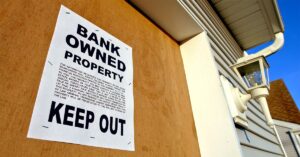Chip and Joanna Gaines, alongside fellow HGTV stars Tarek El Moussa and Christina Anstead, can take partial credit for the resurgence in the fix-and-flip housing market. The pop-culture phenomenon of home-reclamation projects is undescored in every episode of “Fixer Upper” or “Flip or Flop,” and we now see more people looking to play the game themselves.
Whether investors are approaching these projects for the love of the revival or a motivation to make a quick buck, the fix-and-flip market has become a real boost for mortgage originators. There also is demand from potential borrowers who want to buy recently renovated and refurbished properties. Real estate investors know this. But people new to the game may not have anywhere to turn to get started when seeking financing.
This leaves an opportunity to be addressed for mortgage originators. If you do not currently facilitate fix-and-flip loans, you should consider whether or not it makes sense to lend money to a borrower for a property where current conditions may warrant a lower appraisal value than what might be projected following repairs and renovations. And that question may be evaluated based on the likelihood that you have seen a slowdown in your business.
Rising interest rates have contributed to a decelerating housing market. Dramatically high home prices in many markets have made it virtually impossible for many people to scrape together the money needed for a downpayment. A lack of housing inventory in other markets adds to that problem. Millennials may be starting families, but that does not mean they are buying homes.
If your phone rings and a fix-and-flip borrower is on the other end asking about whether you can help them buy an investment property, what do you say?
A profitable niche
Fix-and-flip lending has become a huge part of the real estate and mortgage industries. According to Attom Data Solutions, Nearly 208,000 single-family homes and condominiums were flipped during 2018, although this figure declined 4 percent on an annual basis, according to Attom Data Solutions. Flips were 5.6 percent of all U.S. home sales in 2018.
Home flips continue to be profitable, as the average gross profit for these investments was $62,000 in fourth-quarter 2018, and more than half of all homes flipped during the past third quarter were sold for more than $200,000, Attom Data reported. And although the average return on investment of 42 percent during the past fourth quarter was a seven-year low, financing for flips is readily available, with the nearly $20 billion in loans across the U.S. in 2018 representing an 11-year high.
The positives of that data show why more potential borrowers are excited about flipping houses. But it takes capital for people to get started. It may be difficult, if not impossible, for a person new to real estate investing to get a bank loan to start the process. Seeking out a reputable hard money lender — or asking friends or family for startup funding — also may be daunting for a rookie house flipper. This gives mortgage originators an opportunity for a new niche market.
An originator familiar with fix-and-flip lending options has an advantage when taking a phone call from the next aspiring Chip or Joanna Gaines. You could be the only person your clients know who can confidently explain the basics of these mortgages. Along with being able to answer questions about this process and potentially earn a commission, there’s another benefit as well: A person flipping a house has to sell it to someone who will likely need a more conventional mortgage. Having a fix-and-flip loan at the ready just puts another tool at your disposal.
Steps for success
So, what do you need to do to get your foot in this potentially lucrative door? The first step is to work with a reputable partner. Lenders you’ve previously worked with when you need help finding niche financing may already have something in the works, such as a wholesale fix-and-flip loan product.
Working with a client who is purchasing a flipped property may help you find new clients. Sellers of these properties may have faced some difficulties procuring renovation financing and could be in the market for a new lending partner. And checking in with past clients to see if they have an interest in becoming a real estate investor may spur new business.
In addition, a mortgage originator should keep his or her eye on the places where real estate investors gather. It’s OK if you’ve never worked with fix-and-flip investors before as many major metropolitan areas have active real estate investor clubs, which meet regularly to talk about the various steps involved in rehabilitating a property. These are good places to go to meet potential clients who are just starting out.
Of course, providing a client with a stellar customer-service experience also helps to retain their business. This is even more true with home flippers — no one gets into it just to try it once. These investors almost always look to flip a second or third property soon after they complete their first sale. After all, fix-and-flippers are just like you: They’re interested in growing a business and there’s no reason you can’t grow together.
Author
-
Will Jackson is the wholesale sales manager at Angel Oak Prime Bridge, an Atlanta-based lender for real estate investors. Jackson has worked in the mortgage industry for more than 20 years, six of which were spent in construction lending.
View all posts






